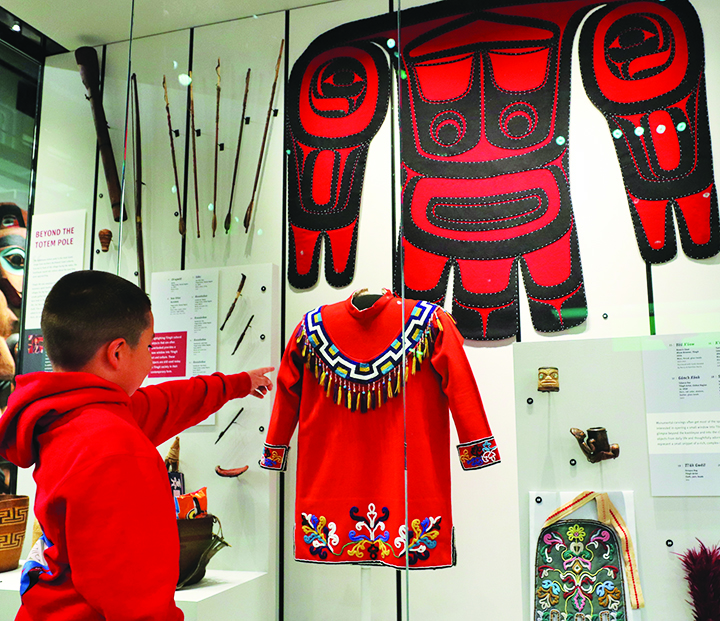
By Micheal Rios, Tulalip News
“The Burke Museum stands on the lands of the Coast Salish peoples, whose ancestors resided here since time immemorial,” said Burke executive director Julie Stein to a growing crowd of 400+ people representing tribal nations from all over the Pacific Northwest. “Many Indigenous peoples thrive in this place. Part of that history is embedded in the museum, and we move forward in a good way so happy you are with us.”
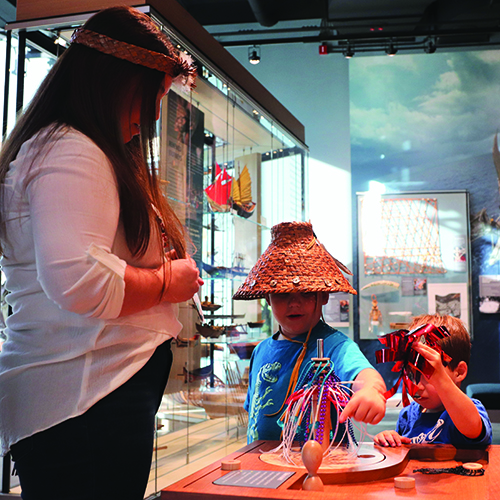
Julie’s words were direct and heartfelt as she greeted the hundreds of Native visitors who convened at the Burke Museum’s ‘Indigenous Preview’ on October 10. Nearly a thousand community engaged and local Native culture-bearers RSVP’d to the evening’s event dedicated to relationship building and seeking to preserve the ingenuity, creativity, and complex knowledge of a living and thriving cultural resource.
“You all are the first to be invited to tour and experience the all-new Burke Museum,” continued the museum’s executive director. “We are truly honored by your presence. The Burke recognizes our colonial legacy, and we promise to dedicate ourselves to learning from communities and building a more ethical and collaborative future together.”
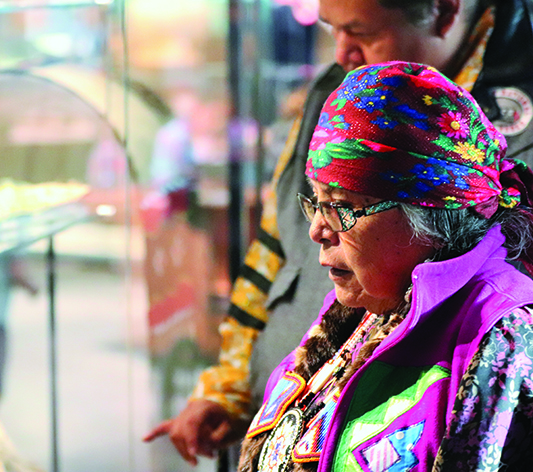
In honor of its collaborations with Indigenous communities, the Burke invited all Indigenous peoples to see the all-new $99 million, 113,000-square-foot facility before it officially opened to the public. Nearly a decade’s worth of planning and consultation went into the unique redesign of a natural history museum with a massive 16 million object collection. Two highly anticipated exhibitions feature Northwest Native artistry and craftsmanship at its finest.
An emphasis on transparency and treating the hundreds of Native cultural artifacts with the proper respect, while acknowledging their rightful creators, was the topic of many conversations while the gathering of Native peoples toured the museum. Many Coast Salish tribal members found the Culture is Living gallery to be the highlight of the evening. From intricate weaving creations to hundreds of years old traditional regalia to a truly stunning dedication to canoe journey that showcased carved paddles by many of the 29 federally recognized Washington tribes, the gallery offered a very real sense of purpose and awareness to its Native guests.
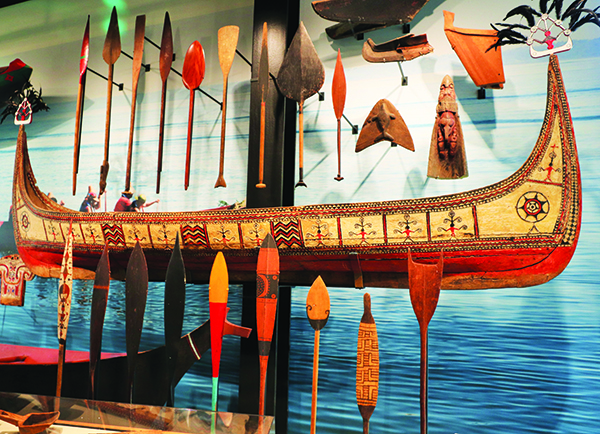
According to the Burke, the Culture is Living gallery breaks down traditional museum authority and brings the expertise and knowledge of communities to the forefront. Cultural objects aren’t tucked away on the shelves. They are alive, embodying the knowledge, language, and stores of people and cultures.
“We wanted to share how diverse our Indigenous cultures are and share the fact that we are still here,” said Sven Haakanson (Alutiiq), curator for North American anthropology. “To us, the cultural pieces we have on display are living. We are representing a hundred-plus cultures in our Culture is Living gallery and to pay them their proper respects we interwove elements of Earth, air, water, our ancestors, children, and community.
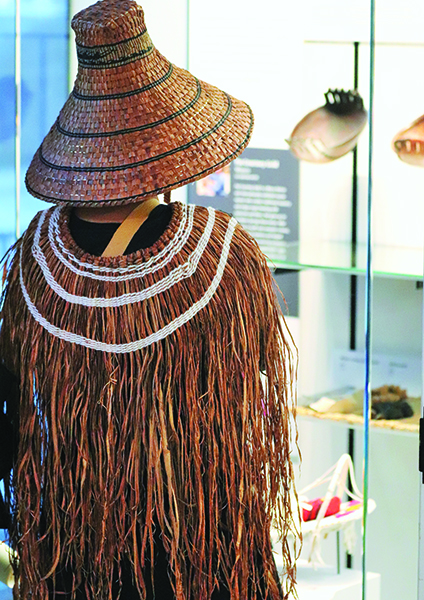
“As a curator, one of the things I’m most proud of is we put the Native languages first on every item. Over the next decade, I’m hoping to work with our local tribes to get more item descriptions written in their languages and to add quotes from those communities telling us what the item’s story is from their perspective,” continued Sven.
During the special Indigenous Preview event, several local tribes had representative of their canoe families share song and dance for the mostly Native attendees. Food was enjoyed and provided by the much hyped Off the Rez café, a permanent outpost spawned from Seattle’s first and only Native food truck. There were a number of hands-on exhibitions that guests were drawn to. Chief among them a weaving setup that welcomed the expertise of Native weavers to showcase their skills with rope, cedar, or ribbon that have been passed down for generations.
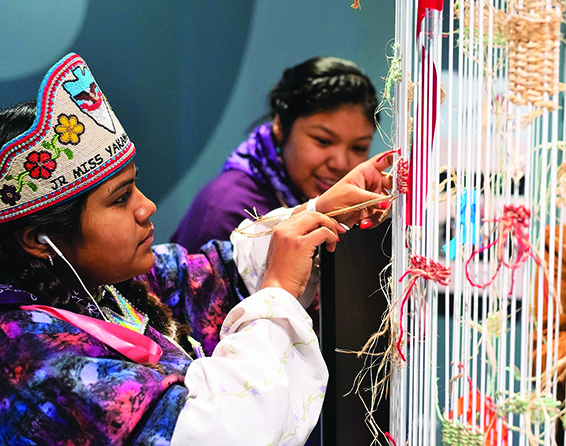
“The inclusivity is awesome!” shared 24-year-old Stephanie Masterman (Tlingit) after she made her signature in weave form. “Yes, there are artifacts dating back hundreds of years, but there is so much contemporary art, too. So many young Native artists have works included among the galleries. The voice and presence of the future generations we always talk about is definitely represented.”
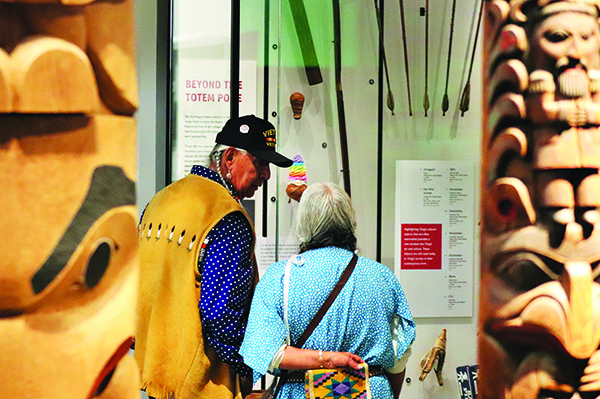
It’s a new kind of museum with a whole new way to experience our world. The Burke is located on the University of Washington campus and is free to all visitors on the first Thursday of every month. You can expect to be blown away by the attention to detail the dedicated acurators used in setting up each and every item in the six new galleries. And with Native voices prominently featured, there is sure to be an opportunity for learning and reflection.
“Museums have always been colonial spaces and the way the old Burke was structured separated each culture rather than having conversations across cultures that are relevant to our people,” said recent UW graduate Natalie Bruecher (Native Hawaiian). “Here in the new Burke, our knowledge, our ways of being, and even our relationships to each other are really uplifted. This space is a home for our students, our Indigenous communities, and our ancestors that are embodied in every single piece on display.”
For more information please visit burkemuseum.org or call (206) 543-7907